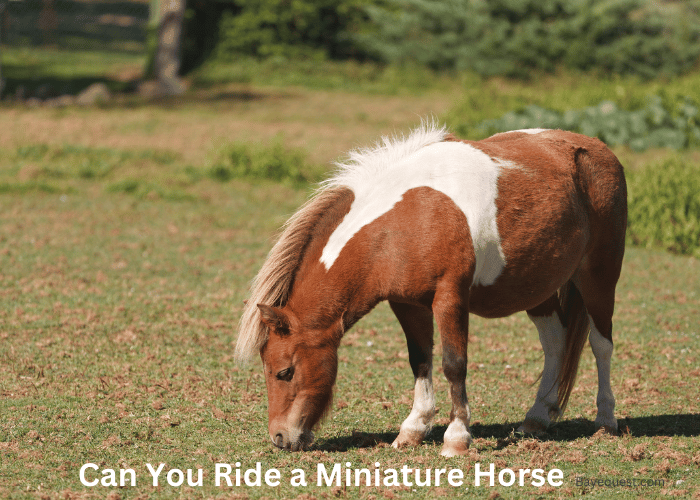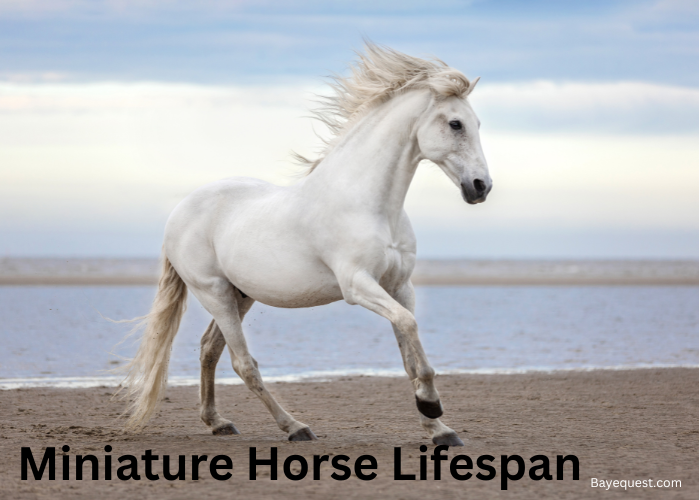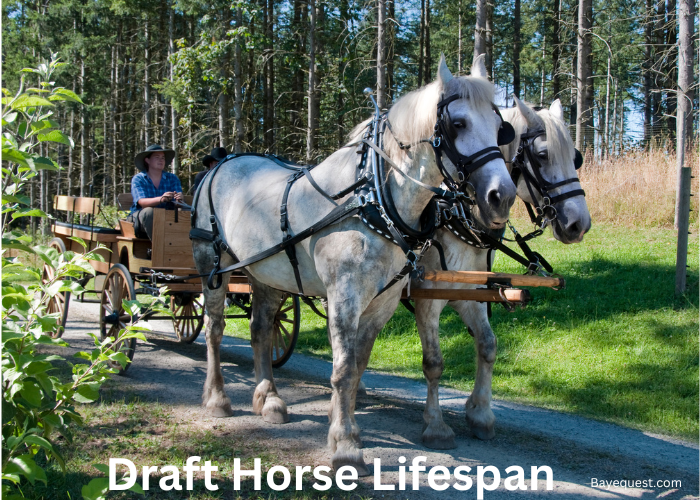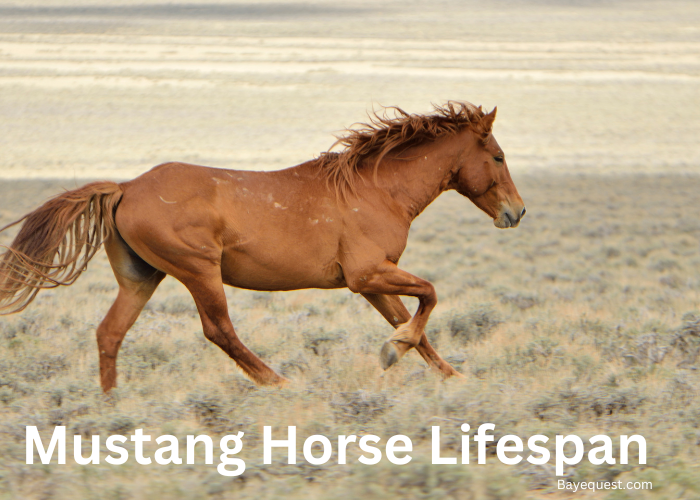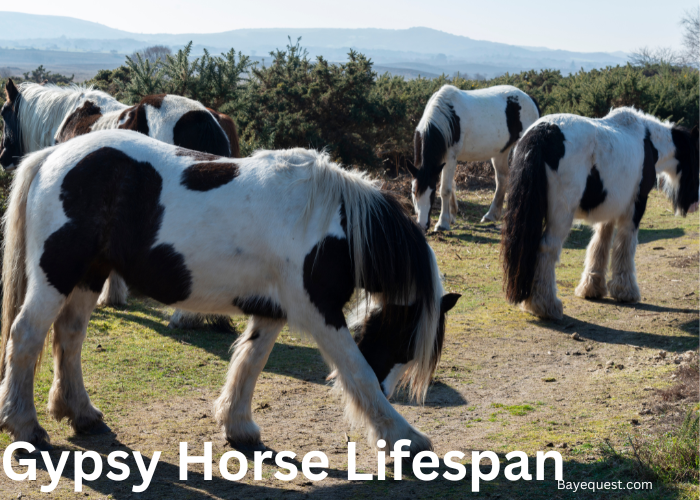The most adorable horses on earth. You know the feeling if you’ve owned one before. You’ll never meet a cuter horse.
Unfortunately, miniatures are so tiny that you often wonder whether they can take up regular horse duties.
Granted, they’re some of the best companions. Moreover, the mini horse is a wonderful therapy animal. But can they drive, ride, and carry like other horses?
More specifically, can you ride your mini horse? Let’s find out.
Can You Ride a Miniature Horse? Key Takeaway
No, miniature horses should not be ridden by anyone over 70 pounds due to their size and weight limits. Exceeding this weight can cause injuries and ethical concerns. These horses are better suited for driving and light work, making them excellent companions for such activities.
What is a Miniature Horse?
Miniature horses are “mini-sized” versions of their full-sized counterparts. They are smaller horses developed through selective breeding over many decades.
The horse must be registered with the American Miniature Horse Registry (AMHR) or American Miniature Horse Association (AMHA) to be considered a miniature.
The two registries ensure the miniature horse’s continuity and track mini-horse populations in the US.
Surprisingly, the two have different entry heights for mini horses. AMHA only registers horses under 34 inches (8.5 hands). Meanwhile, AMHR has two miniature horse divisions.
Division “A” mini horses measure 34 inches or less, while division “B” minis are 34-38 inches (8.5-9.5 hands).
The average mini horse weighs 150-350 pounds and comes in various colors, from solid to spotted coats and pintos.
The price of a miniature horse can vary widely depending on factors such as pedigree, conformation, size, and coat color.
Generally, prices range from a few hundred dollars for a pet-quality mini to several thousand dollars for a show-quality miniature horse with a distinguished pedigree.
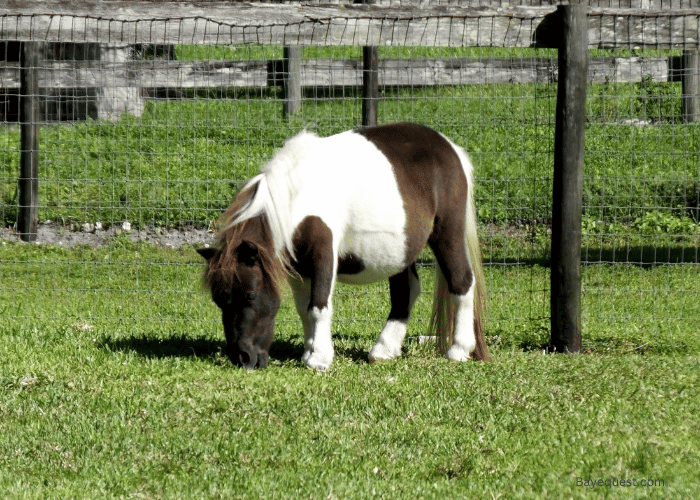
Can You Ride a Mini Horse?
The short answer is – NO. Why? Because horses can only carry so much weight. Beyond a critical point, injuries and ethical concerns arise.
The rule of thumb is to load horses with at most 20% of their weight. This translates to 30-70 lbs. for miniature horses.
Unfortunately, on average, a fully-grown human weighs 130 pounds. This is almost twice the maximum carrying capacity of a mature miniature horse.
By comparison, a fully-grown American Quarter horse weighing 1,000 lbs. can carry loads up to 200 pounds. Therefore, quarters can carry fully grown adults comfortably.
New research shows that anything above 15% of the horse’s weight is too much load, meaning a 350-pound miniature horse must not carry more than 52 pounds. However, most professionals use the 20% rule.
Related read: Can you ride a Clydesdale?
Can Kids Ride Miniature Horses?
Yes, some kids can ride miniature horses. But, for safety reasons, it depends on the size of the horse and the rider.
Generally, kids under nine can ride a mature miniature horse, provided the kid’s weight doesn’t exceed the animal’s allowable limit.
This means the average 9-year-old can safely ride a pony, as humans are only around 70 lbs. at that age. Younger kids can also take a ride on a miniature’s back.
However, consider a bigger horse if the kid is more than 20% of the horse’s weight. Otherwise, you’re risking the kid’s and the mini horse’s lives. Ponies are a wonderful alternative.
Additionally, keep your kids from untrained miniatures. Though their willing attitudes are adorable, an untrained horse doesn’t know how to balance live weight.
Moreover, untrained horses don’t understand and may not know how to respond to leg and rein cues – putting the kid’s life in danger.
The bad news is that training a miniature horse is more challenging than working with full-size horses. Their small size means a fully-grown trainer cannot get on the miniature’s back to offer practical training. Therefore, you must find specialized ground trainers.
After basic groundwork, an experienced kid mounts the mini horse to finish off the training work under professional supervision.
Even worse, most mini horses never fully learn to ride, no matter how long you try. If this happens, consider lead-line training, where the horse carries kids while being led. You’ve likely encountered similar ponies at fairs and festivals.
Interesting read: Differences and Similarities of Ponies and Mini Horses.
At What Age Can Kids Ride Miniature Horses?
You must wait until the horse matures to begin back-riding. Otherwise, you put the young horse under serious strain and may compromise their life for good.
So, how old is old enough?
It depends on many factors. However, professionals and welfare associations believe horses are ready to carry and pull weight at three years. But remember that some horses develop slowly. Giving the late bloomers even more time isn’t just ethical but also minimizes the risk of injuries.
In the meantime, consider playing with your mini horse to bond and stimulate their growth. You can also begin ground driving and obstacle courses.
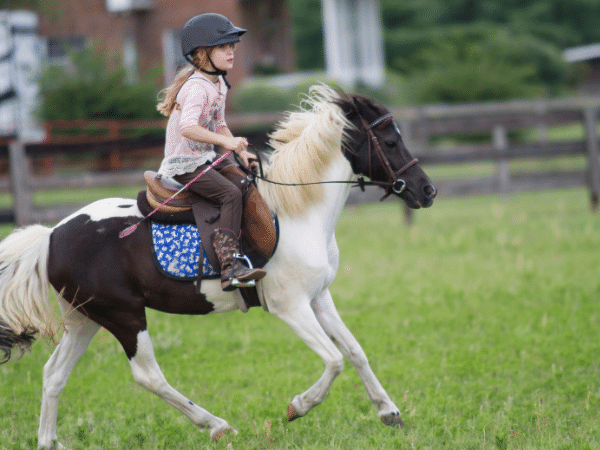
How are Miniature Horses Trained for Riding?
If you wish to let the kids ride your miniature, the first step is to prepare the horse for riding. Training is done from the ground then you can find an experienced kid to finish off.
Alternatively, you can watch closely as the kids ride. Here’s how to train a mini horse to ride;
Introduce haltering: Start by introducing the halter. Then, attach a lunge line to the halter and walk (lunge) the mini horse for a few minutes every day for a few days.
Basic lunging: Introduce them to basic instructions, like having them move left when you pull left on the line. Additionally, this is where the horse learns to move forward when you raise your arm.
Round-pen training: After a few days of lunging, progress to round-pen training. This stage introduces further commands and cues, like smooching noises. By the end of round-pen training, the horse should stop when you say “whoa” or “stop.”
Introduce riding equipment: From there, you can introduce riding equipment. We can’t stress enough the need for breed-specific equipment. Get a mini saddle and saddle pad. The bride, bit, and reins must also match the horse’s size. Regularly show the mini horse the equipment to build anticipation.
Saddle up but don’t ride yet: This stage introduces the little horse to having a saddle and other driving equipment on their bodies. Fit the saddle pad, then the saddle, bridle, and bit. Then attach the reigns. You may have to introduce the items gradually over a few days. Leave the equipment on so the horse gets used to them.
Basic groundwork: Groundwork training teaches the mini horse riding commands and movements without weight on their back. To teach them reining cue, hold the rains in both hands and walk her around, occasionally applying backward pressure as a rider would. This is also where you teach the horse most riding commands, from walk to back and easy to stand.
Introduce weight: First, you need to know the maximum weight the miniature can carry, i.e., 20% of its weight. Next, introduce them to riding weight by gradually adding loads to the saddle. Graduate slowly over a few days until they can carry a grown kid’s weight.
Introduce climbing: Climbing for the first time is an unusual experience for the horse. So, make sure the kid climbs safely and gently. Calm the horse if they’re nervous and try again the next day if they’re too scared.
It’s time to ride: You can start riding sessions when the horse is comfortable having someone on the saddle. Start with short walks, getting the kid off the saddle every 5-10 minutes to allow the horse to rest. Then increase the intensity gradually until the horse can canter under saddle for up to 30 minutes.
Why is There a Weight Limit for Horseback Riding?
Horseback riding puts an extra load on the animal’s vertebrae, increasing the risk of injury and disfigurement. This risk multiplies if the rider’s weight exceeds the horse’s carrying capacity.
Here are the three main ways your horse may suffer:
Psychological trauma: Horses feel pain just like humans. They also get tired like us. Therefore, your horse will feel unloved if you force them to carry more weight than necessary. Your horse feels unloved if they’re constantly gloomy and irritated. The horse may even attempt to escape.
Physical injuries: The extra weight on the horse’s back puts undue strain on the vertebrae, increasing the risk of spinal injuries. For example, the horse may develop a “kissing Spine,” where two bony projections at the top of the vertebrae overlap or touch. Horses with a Kissing Spine are paralyzed forever and must live on painkillers for the rest of their lives.
Dangers for the rider: Riding a mini horse also puts the rider in danger. For instance, you may not achieve the proper posture due to the horse’s small back. Poor posture increases the risk of spinal injury. It also compromises your balance and increases the risk of falling.
Riding vs. Pulling: Can a Miniature Horse Pull Weight?
Yes, miniature horses can pull weight. You may have to check with the registry for breed-specific guidelines.
However, mini horses typically pull up to three times their weight. This means 1,000+ lbs. for a 350-pound miniature, equivalent to 6 adult humans.
But this doesn’t mean you should load up a cart with one ton of goods and have your mini horse pull it. Instead, if you must use the mini for this purpose, ensure the load doesn’t exceed 2x the horse’s weight.
Additionally, consider the following;
Age: Never place young foals under undue strain. It hampers their growth and can cause bone damage.
Health: Putting old and unhealthy animals under extreme strain is cruel and risky. It only worsens the animal’s health.
Terrain: Mini horses can only pull the maximum weight capacity on well-paved roads. Consider lighter loads on rough terrain.
Distance: Although horses can pull the maximum weight capacity over short distances, they can only handle lighter loads over long distances.

What Else Can Miniature Horses Do?
You can use miniature horses in many ways besides riding and pulling weight. For example, mini horses excel in freedom dressage. This means performing unique (but natural) stunts, such as yawning and kissing, on command.
You can also register your mini horse to perform at shows. Some shows are breed-specific, but others are open to different horse classes. The most popular miniature horse shows include jumping on the hand, freedom classes, obstacle courses, and dumbbell events.
Other potential mini-horse disciplines include;
- Therapy
- Inspections
- Cycling and running
Best Miniature Horse Breeds in 2024
There are only two miniature horse breeds in North America – the Falabella and the American Miniature Horse.
Originating from Argentina, Falabella horses are tinier, measuring as little as 20 inches at the withers. They weigh 70-220 pounds. Meanwhile, American Miniature Horses are native to the US. They measure up to 38 inches at the withers and weigh 250-350 pounds.
So, you can already tell that the American miniature is the best choice when shopping for a riding miniature. It’s a bigger, stronger, and harder breed.
Read also: How Do You Break a Horse?
Miniatures vs. Ponies
Many people confuse miniatures with ponies. But the two are not the same. Both are tinier than regular horses, but ponies are bigger. The average pony is 14.2 hands, compared to 9.5 or less for miniatures.
Furthermore, ponies are stronger, with shorter legs and more muscular bodies. That’s why average-sized adults can ride some ponies. They also have thicker coats, tails, and manes. The best examples are Shetland ponies, Hackney ponies, and Exmoor ponies.
Miniature horses are more refined, with short backs, long, flexible necks, and straight legs like modern horses. But they aren’t as strong.
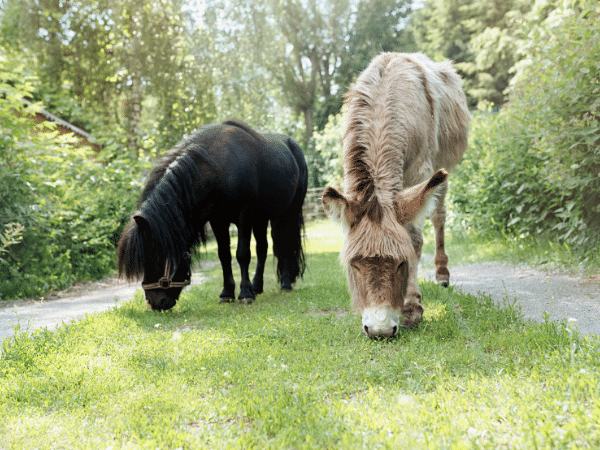
Can You Ride Miniature Ponies? FAQs
What’s the Point of a Miniature Horse?
Miniature horses are beautiful mini-sized horses selectively bred for various uses, including petting, showing, and therapy. They are also valuable aids for people with disabilities. For example, mini horses are among the best guides for blind people. Of course, miniatures can also be performed in shows and events.
Can You Ride a Pony?
Yes, adults can ride mature ponies, especially from the larger breeds. Why? Because ponies are much bigger than miniature horses. The average pony stands at 14 hands tall and weighs up to 800 lbs. Therefore, sticking with the 20% rule, a mature pony can carry a 160-pound adult comfortably.
Can You Ride Miniature Horses? Conclusion
Riding miniature horses is prohibited in most states. However, a few states allow it, provided you don’t endanger the horse’s health or life.
This often means limiting the saddle weight to 20% of the horse’s weight, meaning only kids under nine may ride a mini horse. Fortunately, miniature horses have many other applications.




